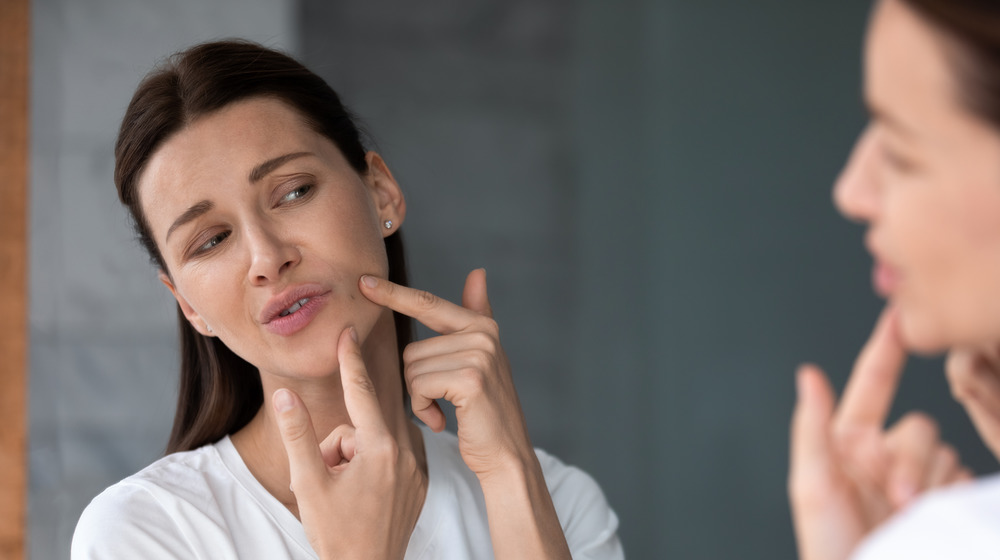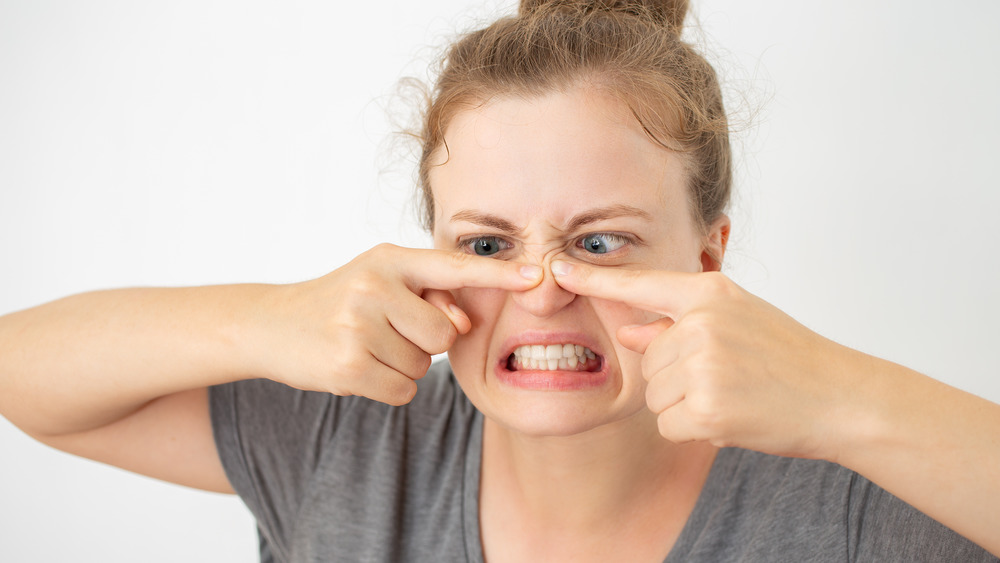The One Area Of Your Face Where You Should Never Pop A Pimple
While we know dermatologists and estheticians dissuade us from ever popping a pimple, occasionally, when one is particularly stubborn and noticeable, we can usually find a way to do so with minimal damage by ensuring we use clean hands, have antiseptic at the ready, and use heat and steam to loosen the white head before taking action. However, specialists say there are certain parts of your face where you should never pop a pimple. And by never, we really do mean never.
This part of your face is called "the triangle of death," and while such a title might seem over-dramatic, there is a reason why dermatologists and skincare experts call it that. As Dr. Amesh A. Adalja, a board-certified infectious disease physician at Johns Hopkins Center for Health Security explained to Healthline, "The triangle of death is a colloquial term for an area of the face that includes the region of the nose and corners of the mouth. This area is connected via blood vessels to areas of the skull where infections can spread very rapidly and become more serious."
Why this area can be a dangerous place to pop a pimple
The thing is, it isn't just your skin that can contract an infection, and that's why popping a pimple in "the triangle of death" is dangerous beyond just causing skin damage. According to Dr. Adalja, this is the part of the face where staph infections are more likely to arise. According to the Mayo Clinic, a staph infection is caused by a particularly dangerous bacterium called staphylococcus, which infect the skin. If the infection spreads or goes untreated, it can even become deadly.
For this reason, if you get a pimple in this region of your face, make sure you are washing well and keeping good hygiene, and rather than popping or picking at the blemish, try to treat it with topical medications and time (via Healthline). If the pimple bursts on its own, make sure to thoroughly clean and disinfect the area, and keep on eye on it to ensure it is healing properly. Never be afraid to contact your doctor or dermatologist if something doesn't seem right or if the area is becoming red, inflamed, painful, or shows signs of infection.

